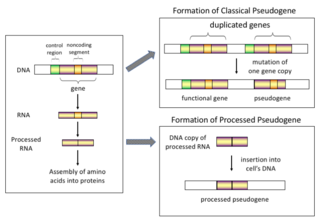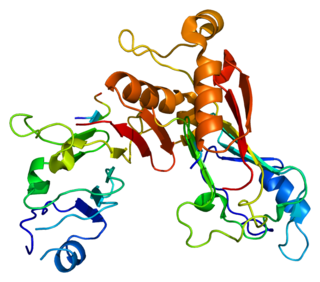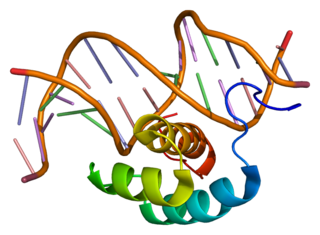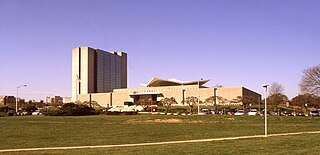In the genetic code, a stop codon is a nucleotide triplet within messenger RNA that signals a termination of translation into proteins. Proteins are based on polypeptides, which are unique sequences of amino acids. Most codons in messenger RNA correspond to the addition of an amino acid to a growing polypeptide chain, which may ultimately become a protein. Stop codons signal the termination of this process by binding release factors, which cause the ribosomal subunits to disassociate, releasing the amino acid chain. While start codons need nearby sequences or initiation factors to start translation, a stop codon alone is sufficient to initiate termination.

Pseudogenes, sometimes referred to as zombie genes in the media, are segments of DNA that are related to real genes. Pseudogenes have lost at least some functionality, relative to the complete gene, in cellular gene expression or protein-coding ability. Pseudogenes often result from the accumulation of multiple mutations within a gene whose product is not required for the survival of the organism, but can also be caused by genomic copy number variation (CNV) where segments of 1+ kb are duplicated or deleted. Although not fully functional, pseudogenes may be functional, similar to other kinds of noncoding DNA, which can perform regulatory functions. The "pseudo" in "pseudogene" implies a variation in sequence relative to the parent coding gene, but does not necessarily indicate pseudo-function. Despite being non-coding, many pseudogenes have important roles in normal physiology and abnormal pathology.

Nuclear pore complex protein Nup98-Nup96 is a protein that in humans is encoded by the NUP98 gene.

Homeobox protein Hox-A9 is a protein that in humans is encoded by the HOXA9 gene.

Homeobox protein Hox-A10 is a protein that in humans is encoded by the HOXA10 gene.

Homeobox protein Hox-A1 is a protein that in humans is encoded by the HOXA1 gene.

Homeobox protein Meis1 is a protein that in humans is encoded by the MEIS1 gene.

Homeobox protein Hox-A5 is a protein that in humans is encoded by the HOXA5 gene.

Homeobox protein Hox-A11 is a protein that in humans is encoded by the HOXA11 gene.

Homeobox protein Hox-A7 is a protein that in humans is encoded by the HOXA7 gene.

Homeobox protein Hox-A13 is a protein that in humans is encoded by the HOXA13 gene.

Pre-B-cell leukemia transcription factor 2 is a protein that in humans is encoded by the PBX2 gene.

Homeobox protein Hox-A3 is a protein that in humans is encoded by the HOXA3 gene.

Homeobox protein Meis2 is a protein that in humans is encoded by the MEIS2 gene.

Gag/pol translational readthrough site is a cis-regulatory element found in retroviruses. The readthrough site facilitates the mechanism of translation readthrough of the stop codon at the gag-pol junction producing the gag and pol fusion protein in certain retroviruses. Retroviruses whose gag and pol genes are in the same reading frame often depend upon approximately 5% read-through of the gag UAG termination codon to form the gag-pol polyprotein. This readthrough is usually dependent on a pseudoknot located eight nucleotides downstream of the stop codon (UAG). Sequence conservation is found in the second pseudoknot loop.
Pol refers to a gene in retroviruses, or the protein produced by that gene.

The COMMD3-BMI1 gene in humans encodes the COMMD3-BMI1 readthrough protein.

FAM47E-STBD1 readthrough is a protein that in humans is encoded by the FAM47E-STBD1 gene.

RNF103-CHMP3 readthrough is a protein that in humans is encoded by the RNF103-CHMP3 gene.
RAB4B-EGLN2 readthrough is a protein that in humans is encoded by the RAB4B-EGLN2 gene.

The United States National Library of Medicine (NLM), operated by the United States federal government, is the world's largest medical library.
The public domain consists of all the creative works to which no exclusive intellectual property rights apply. Those rights may have expired, been forfeited, expressly waived, or may be inapplicable.













